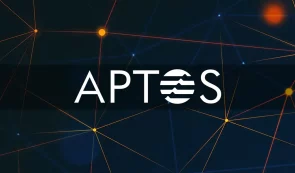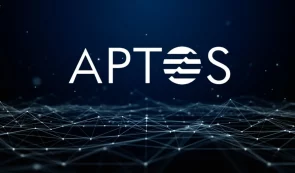What is Aptos
Aptos is a first-layer blockchain network that uses a new programming language for smart contracts called Move. The project is being developed by Aptos Labs, a blockchain startup led by two former Meta employees.
APT is the native cryptocurrency of Aptos. A few days after its ICO, APT reached a market capitalization of over $1 billion. In the following days, its valuation stabilized at around $690 million.
The total offering of the project has the following distribution:
- Community 51.02%
- Major Participants 19%
- Foundation 16.5%
- Investors 13.48%
- Brief history of Aptos (Diem)
The project’s core network was launched in October 2022, but the project’s history dates back to 2019.
What is now called Aptos began with the tech company Diem. Meta (aka Facebook) began developing its own stablecoin, Libra, which was initially backed by dozens of major companies, including Visa and Mastercard.
Things didn’t go as planned, and in late 2021, Facebook’s blockchain initiative was shut down, and Diem was sold to crypto bank Silvergate Capital for $182 million. After the sale, some employees continued with open-source blockchain development and founded Aptos Labs.
On October 17, 2022, the Aptos core network was brought online. A few days later, the tier-one project added Name Services and made a preliminary deal with Google Cloud.
Aptos Labs team and funding
The Aptos Labs roster includes former executives and engineers from Meta’s Diem blockchain, Meta’s Novi wallet, and the Move programming language. CEO Mo Shaikh has a diverse background in capital markets, accounting, and consulting.
In the first seven months of the development stage, Aptos was able to raise $350 million, with early investors Andreessen Horowitz, a16z, and Multicoin contributing about $200 million.
By July 2020, Aptos Labs had secured an additional $150 million from Apollo, Griffin Gaming Partners, Franklin Templeton, Circle Ventures, and Temasek.
How does the Aptos blockchain work?
Architecturally, the Aptos chain is a set of validators that receive and process transactions using Byzantine fault tolerant (BFT) and proof of stake (PoS).
Holders pledge (stack) tokens in the validators. Validators can be active and inactive. The consensus voting strength depends on the size of the pledge.
It is worth noting that Google Cloud manages a single validator.
Clients can be full nodes or light nodes. Full nodes replicate transactions and blockchain state, while light nodes (e.g., wallets) support only the current validators.
The Aptos blockchain can theoretically reach 160,000 transactions per second (TPS) while maintaining security and reliability. Several revolutionary concepts underpin Aptos’ impressive performance.
Block-STM
Block-STM technology creates an engine that efficiently processes smart contracts. Aptos’ blockchain engine relies on parallel execution to process multiple transactions simultaneously. This makes things much faster because one failed transaction won’t stop the entire chain.
Move programming language
One of the things that make the Aptos cryptocurrency so attractive is Move. This custom programming language was first developed for the Diem blockchain. Move allows users to define custom resources that cannot be copied or discarded, making it much harder for malicious entities to control the Aptos blockchain.
BFT Consensus Protocol
Instead of using a consensus protocol that must follow the order of transactions, Aptos decouples the two processes and allows them to run in parallel. This reduces frequency (the time it takes to confirm network transactions) while increasing speed. To ensure accuracy, Aptos has created a Byzantine fault tolerant (BFT) that analyzes individual states in the chain and automatically updates validators when needed.

